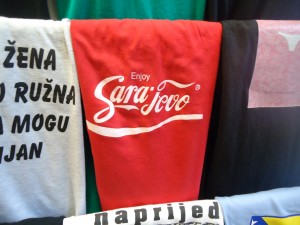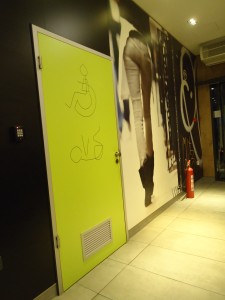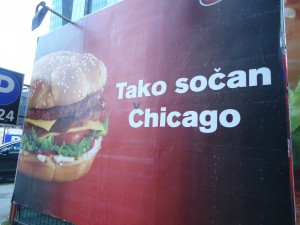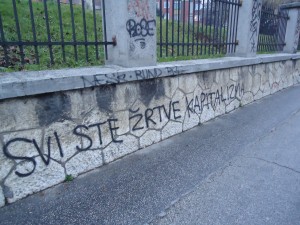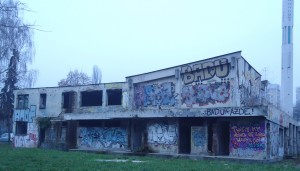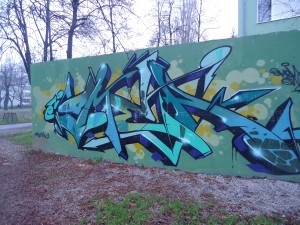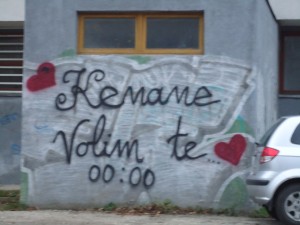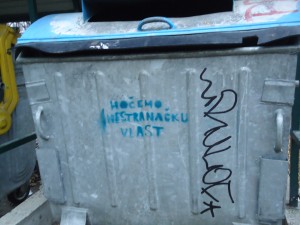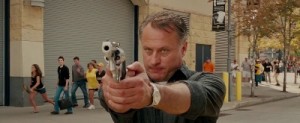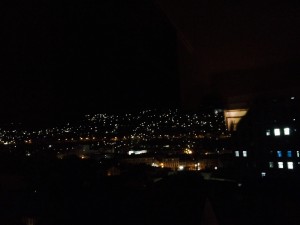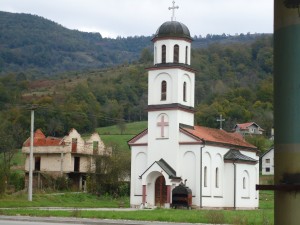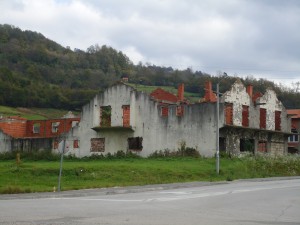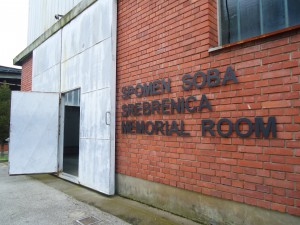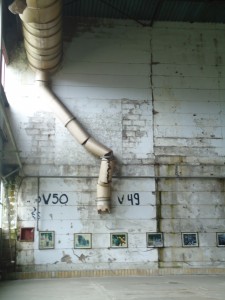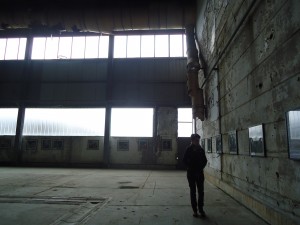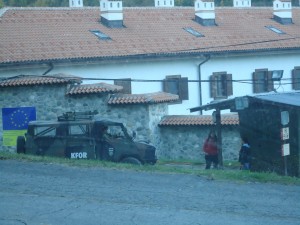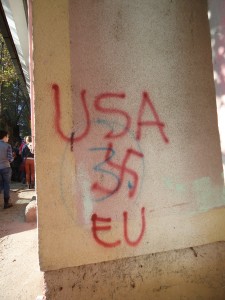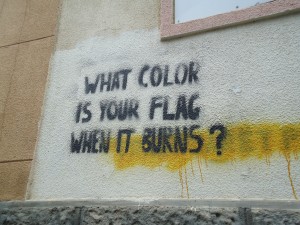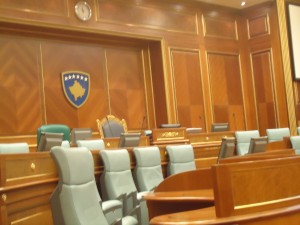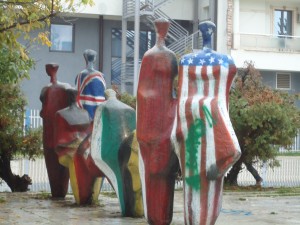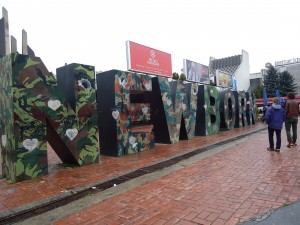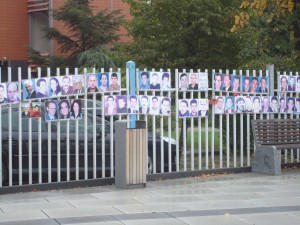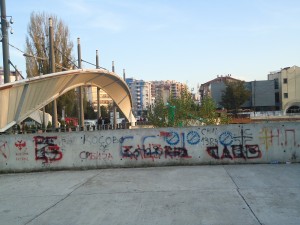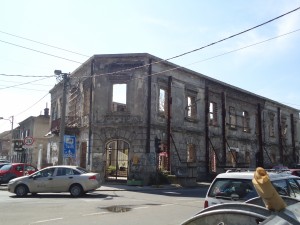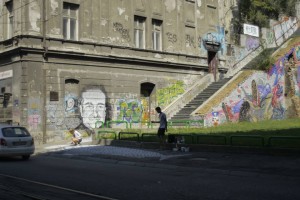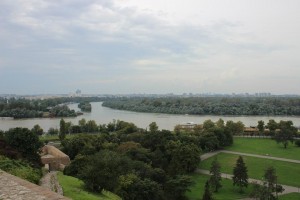Graffiti has such an established role in Sarajevo that even after it disappears from the walls it finds a new place in the city. Locals make an effort to preserve famous graffiti from the war in particular, from pictures featured in the Historical Museum of Bosnia-Herzegovina to T-shirts sold at souvenir shops in Baščaršija (Sarajevo’s “old town” or “Turkish quarter”).
Two of these T-shirts are “enjoy Sarajevo” (made to resemble the “enjoy Coca-Cola®” logo) and “Rakija: connecting people” (a take-off of Nokia’s motto).
These T-shirts are also fascinating because the play with the tension between graffiti and commercial advertisement. Whereas billboards advertising products are legal and regarded as legitimate uses of public space, tags advertising graffiti artists are frowned upon as criminal. This contrast reveals a power differentiation between companies capable of paying for the privilege to mark public space and people who write graffiti for no more than the cost of a can of spray paint.
One graffiti artists I talked to complained, “People don’t care if Coca-Cola® made some huge billboard on some building, but if I made a piece there, it’s a problem. I advertise myself but I don’t want to pay…it’s all about money in some way because they think ‘okay, but Coca-Cola paid for this’ – and I didn’t.”
Just as graffiti manipulates corporate logos, companies are using graffiti to advertise their products or create a local, stylish atmosphere in Sarajevo. One current example are ads in bus stops that promote chocolate bars using imitation style-writing and a drawing of someone spray painting the company’s name onto a candy wrapper .
This marketing technique impacts graffiti culture in two ways. First, it indicates that graffiti has established a niche for itself in society, whether because it is considered aesthetically pleasing or because the target audience perceives it as “cool.” By implementing graffiti in its advertisement strategy, this company is acknowledging graffiti’s legitimacy as a part of local culture. On the other hand, however, companies taking this approach hijack the stylistic and cultural appeal behind graffiti to advertise their product, not only stripping the art form of its fundamental and empowering characteristic— the personalized and unsanctioned re-appropriation of public space — but also robbing graffiti artists of that space.
Graffiti artists and private companies are now competing for public space and the city’s attention. Instances in which these actors confront and taunt each other (whether they do so consciously or not) are visible throughout Sarajevo. The first MacDonald’s® to ever open in Bosnia, for instance, is decorated on the interior with graffiti wallpaper and the bathroom door signs are drawn to resemble images scratched on to a wall.
In this case, MacDonald’s® is luring people off of the street (away from Sarajevo) and into the restaurant (towards corporate American culture), yet appropriates a central component of Sarajevo’s street culture to create its atmosphere. A MacDonald’s® billboard in another part of town reveals that locals are retaliating, albeit in a simple (and most likely unintentional) way. The billboard features a giant hamburger and says “Chicago is so juicy;” but someone came along and changed the C to Č to make the spelling resemble Bosnian more than English.
This gesture is small and humorous, but also shows resistance to the epitome of American corporate power, MacDonald’s.® It sends a signal that the streets belong to Sarajevans and any effort to infringe upon that space by corporations is subject to “correction” (in this case, a spelling correction). Just as Sarajevans implemented graffiti to assert their ownership of the city streets while under siege 20 years ago, they continue to do so now as their city is invaded by corporate power.
